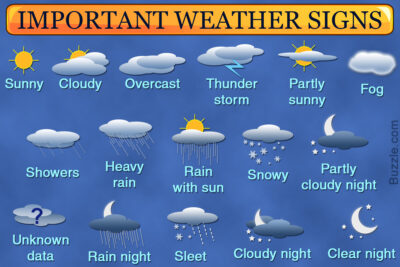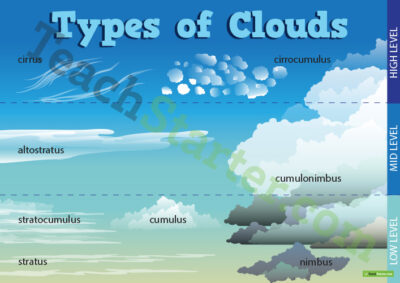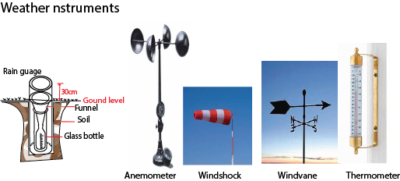
Weather and weather instruments-upper primary science

WEATHER
Weather is the atmospheric condition of a place at a given time over a short period of time.
The study of weather is called meteorology
People who study weather are meteorologist.
The weather may be sunny, rainy, cloudy or windy or calm
A sunny day is a day that the sun is shining
A rainy day is a day that we have rain
A cloudy day is a day having clouds
A day is windy if there is wind blowing
A day is calm if there is no wind blowing at all.
Importance of predicating weather
Plan our daily activities such as moving with umbrellas
Flying of airplanes
Washing clothes
Weather symbols

There are various symbols that are said to help in communicating about the weather. These symbols are called weather symbols.
THE CLOUDS

There are different types of clouds. The clouds are classified depending on how high they are in the sky and according to their shapes.
Nimbus clouds – These clouds are dark grey in colour. They do not have a specific shape and are usually low in the sky. They bring about rain and are called rain clouds.
Weather instruments and their uses
There are different weather instruments and each has its specific purpose. The weather instruments are:
- Wind vane: direction of wind from which wind blows
- Barometer: amount of air pressure
- Rain gauge: amount of rain
- Wind sock: measures strength of wind and direction of wind
- Thermometer: measures temperature
- Anemometer: measures speed of wind

A rain gauge
- measures the amount of rainfall in in millimeters (mm).
- it is made up of a funnel and a collecting container and measuring cylinder.
- It is dug 15cm deep to reduce evaporation
- It is raised 30 cm above the ground to prevent splashing of water
- It should be placed on a flat open ground to receive all the rain
- Reading should be done at the same time everyday.
For revision questions and answers download PDF below
weather station- upper primary.docx
Sponsored by The Science Foundation college +256 753 80 27 09

Thanks for sharing your wisdom with us. Office Products
Great insights! Thanks for sharing. 500 ka redeem code
Find out how MBBS Direct Admission in Telangana can help you.